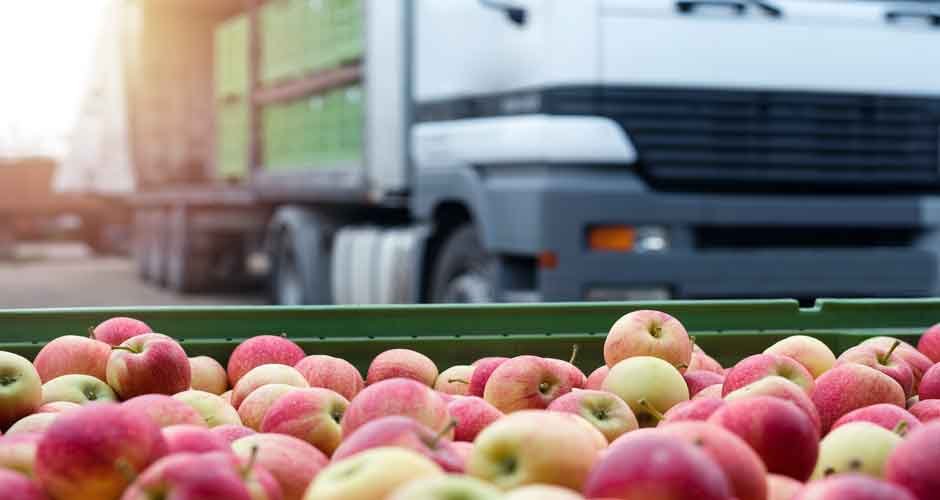Whether it’s your favorite ice cream, a load of fresh produce, or life-saving vaccines, keeping goods cool and fresh during transportation is a crucial endeavor. In this exploration of “Fresh on the Move,” we’ll delve into the world of refrigeration technology, the invisible hero that keeps perishable goods at the right temperature as they travel from farms, factories, or production facilities to our local stores, restaurants, and even our doorsteps.
Chilling Out: The Importance of Keeping It Cool
Refrigeration, often referred to as “reefer” technology, plays a pivotal role in our modern world. It’s the invisible hero that keeps perishable goods at the right temperature as they travel from farms, factories, or production facilities to our local stores, restaurants, and even our doorsteps.
Imagine a world without this essential system. Fresh produce would wilt, dairy products would spoil, and the availability of certain foods would be limited to specific seasons. Beyond our kitchens, critical items like vaccines and pharmaceuticals depend on this technology to maintain their efficacy and save lives.
The Science Behind Cool Transportation
Refrigerated transport relies on the principles of cold storage to keep goods at the desired temperature. Here’s how it works:
- Cooling System:Refrigerated trucks and containers are equipped with cooling systems that regulate the temperature inside. These systems can be powered by electricity, diesel generators, or even liquid nitrogen, depending on the specific requirements.
- Insulation:Insulation materials, such as foam or fiberglass, line the walls and ceilings of the transport unit. This insulation helps to create a barrier between the inside and outside temperatures, preventing heat from infiltrating and keeping the cold air in.
- Temperature Control:Sensors and thermostats continuously monitor the temperature inside the transport unit. If the temperature begins to rise above the set threshold, the cooling system kicks in to bring it back down to the desired level.
From Farm to Table: Food Preservation
Refrigeration is a linchpin of the food supply chain, ensuring that we have access to fresh and diverse foods year-round. Here’s how it benefits us:
- Preserving Freshness:Perishable foods like fruits, vegetables, and seafood are highly sensitive to temperature changes. Refrigeration preserves their freshness by keeping them at optimal temperatures, extending their shelf life, and reducing food waste.
- Global Access:Thanks to this technology, we can enjoy a wide variety of foods from around the world. It enables the safe and efficient transportation of goods across vast distances, making international trade in food products possible.
- Food Safety:Maintaining the proper temperature during transport is essential for food safety. Refrigeration helps prevent the growth of harmful bacteria that can cause foodborne illnesses.
A Cool Solution for Pharmaceuticals
Beyond food, refrigeration plays a vital role in the pharmaceutical industry. Here’s why it matters:
- Vaccine Distribution:Vaccines are delicate compounds that require precise temperature control to remain effective. Refrigeration ensures that vaccines can be distributed safely to healthcare facilities worldwide, even in remote areas.
- Pharmaceutical Integrity:Many pharmaceutical products, from insulin to certain antibiotics, must be stored and transported at specific temperatures to maintain their efficacy. Refrigeration is crucial for preserving the integrity of these medications.
- Life-Saving Impact:Access to critical medications and vaccines would be limited without refrigeration, with potentially dire consequences for public health.
The Environmental Consideration: Energy Efficiency
While refrigeration is indispensable, it’s not without its challenges, one of which is energy consumption. Cooling systems can be energy-intensive, leading to concerns about their environmental impact. However, innovations in technology are making refrigeration more energy-efficient:
- Advanced Refrigerants:Modern refrigeration units use environmentally friendly refrigerants that have a lower global warming potential, reducing their impact on the environment.
- Energy-Efficient Design:Improved insulation, temperature control algorithms, and the use of solar power are some of the design innovations that help reduce energy consumption in refrigeration.
- Sustainability Initiatives:Many companies are adopting sustainability initiatives that aim to minimize the carbon footprint of refrigeration. This includes optimizing routes, using alternative fuels, and investing in electric or hybrid refrigerated trucks.
The Cool Custodians of Perishable Goods
Ultimately, refrigeration is the unsung hero that ensures our access to fresh foods, critical medications, and a wide range of perishable goods. It’s a vital component of the global supply chain that operates silently in the background, preserving the quality and safety of the products we rely on.
As we savor a scoop of ice cream on a hot summer day or receive a shipment of fresh produce at our local grocery store, it’s worth taking a moment to appreciate the cool custodians of these goods. Refrigeration not only makes our lives more convenient but also contributes to the health and well-being of individuals and communities around the world.






